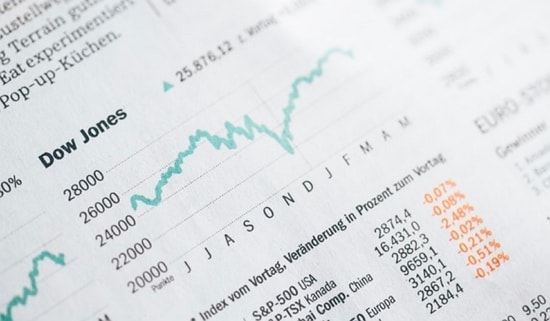Bank Comparison – JP Morgan Chase vs. Morgan Stanley vs. Goldman Sachs
It’s been over a decade since the collapse of the financial systems during the 2008 economic turmoil, and many people have begun recovering their trust, at least partially, in the largest banks reigning over the biggest sectors of our economy.
With the stock markets back on an upswing, investors are looking again to take advantage of growing their nest eggs with well-known companies such as Goldman Sachs or Morgan Stanley or JP Morgan Chase & Co., or others that are Goldman Sachs competitors.
JP Morgan, Morgan Stanley, and Goldman Sachs are three of the largest investment banks that have emerged solidly from the crisis and are taking advantage of the favorable economic climate.
This article will compare JP Morgan vs. Morgan Stanley, Morgan Stanley vs. Goldman Sachs, and Goldman Sachs vs. JP Morgan to give you an idea of which company you may want to look to for investment and banking guidance.



JP Morgan vs Goldman Sachs vs Morgan Stanley
Which firm is the best to work with? Should you look to other Morgan Stanley or JP Morgan competitors? Is there a significant Goldman Sachs, JP Morgan, and Morgan Stanley difference?
AdvisoryHQ will attempt to delve into details you need to know about JP Morgan and the other two institutions to help answer those questions and more.
We will take a look at the business models of each of these three mega-investment banks as well as look at how JP Morgan and Morgan Stanley differ.
Furthermore, we will help you decide between Morgan Stanley vs. JP Morgan, Goldman Sachs vs. Morgan Stanley, and JP Morgan vs. Goldman Sachs so that you can determine which investment bank is best for your own financial needs.
What Is an Investment Bank?
If you’re looking to invest, you may be wondering how an investment bank like Morgan Stanley or Goldman Sachs, or JP Morgan differs from the bank you use for your checking and savings accounts.
Investment banks act as financial intermediaries and handle all types of complex banking transactions. These can include things like underwriting and being the “middleman” between an investor and securities issuer.
When you’re looking into information about Morgan Stanley or another Morgan Stanley competitor, you may find that they also handle things like mergers and acquisitions and can have consumer-facing small banking divisions in addition to their larger investment banking.
Traditional banks – the ones located more on Main Street than on Wall Street – specialize more in small deposits and commercial loans.
Investment banks, however, are known for facilitating the relationship between those that distribute securities and the individuals, businesses, or corporations that buy them. Goldman Sachs, JP Morgan, and Morgan Stanley are three of the most well-known investment banks.
Many investors usually have to decide between Morgan Stanley or Goldman Sachs or JP Morgan when they purchase expensive securities issued by different companies or are looking for robust investment guidance from a well-established industry leader.
In order to choose the best investment bank, it is important to know the differences between JP Morgan vs. Morgan Stanley, Morgan Stanley vs. Goldman Sachs, and Goldman Sachs vs. JP Morgan.
See Also: Checking vs. Savings Accounts | Everything You Should Know: Savings vs. Checking Account Comparison
Are JP Morgan and Morgan Stanley the Same?
Even though they share similar names, the JP Morgan and Morgan Stanley differences are actually quite profound. Members of the famous Morgan family founded both companies over a century ago.
To fully answer the question, “Are JP Morgan and Morgan Stanley the same?”, we need to take a look at the history that resulted in the forming of these two Goldman Sachs competitors.
In 1933, the U.S. government passed the Glass Steagall Act, requiring retail and investment banks to be different. Thus, the Morgan family divided their company into JP Morgan and Morgan Stanley.
About JP Morgan
JP Morgan was purchased by Chase Bank in recent years and now operates under the name JPMorgan Chase & Co. Thus, the difference between JP Morgan and Morgan Stanley dates back to the 1930s, and they are two very separate financial entities.
In this century, the financial institution has worked to gain an edge over JP Morgan’s competitors through the use of artificial intelligence and working to acquire millennials via digital channels. It’s also investing heavily in banking technology.
About Morgan Stanley
When we look at JP Morgan vs. Morgan Stanley, it is easy to see why they are so easily confused. Morgan Stanley bank was founded in 1935 when Henry Morgan and Harold Stanley joined up to begin the company. Today, the bank is one of the largest in the world and specializes in institutional securities, investment management, and global wealth management.
In the comparison of Morgan Stanley vs. JP Morgan, the Morgan Stanley Bank works mostly with corporations, governments, and high-net-worth individuals.
Morgan Stanley was at the forefront of the initial public offering (IPO) of tech giant Apple, Inc. and Facebook Inc. Just like the Morgan Stanley competitors, the firm is going after the millennial market and investing in digital initiatives like a cloud content management service.


 JP Morgan Chase vs. Morgan Stanley vs. Goldman Sachs | 2020 Comparison
JP Morgan Chase vs. Morgan Stanley vs. Goldman Sachs | 2020 Comparison
Difference Between JP Morgan and Morgan Stanley: Size & AUM
The wealth management branch of Morgan Stanley is the largest sector of the company. After purchasing Smith Barney from Citigroup back in 2013, Morgan Stanley has become one of the largest wealth management entities in the world.
Are JP Morgan and Morgan Stanley the same when it comes to their assets under management (AUM)?
When comparing JP Morgan vs. Morgan Stanley, Morgan Stanley has a larger wealth management portfolio. As of March 2019, Morgan Stanley Wealth Management reported 1,126 billion AUM and J.P. Morgan Private Bank reported 597 billion AUM.
If we look at JP Morgan vs. Morgan Stanley, after being bought by Chase, JP Morgan Chase has come to be recognized as a leading multinational banking and financial services holding company.
What’s the difference between JP Morgan and Morgan Stanley in size?
If you’re looking at size based upon overall assets, the JP Morgan and Morgan Stanley differences are flipped as compared to looking at the assets under management.
JP Morgan has the distinction of being the largest U.S. bank by assets, with Morgan Stanley coming in at number 6, and Goldman Sachs at number 5.
So, ultimately, while the JP Morgan and Morgan Stanley differences are mainly in the customers and areas of the financial industry they put the most focus on, they are also considered competitors and offer many of the same services.
Don’t Miss: How to Find Top High Yield Savings Accounts (Guide)
All-in-One Change Management Tools Top Rated Toolkit
for Change Managers. Get Your Change Management Tool Today...
About Goldman Sachs
Goldman Sachs was founded in 1869. Though the firm was hit particularly hard by the economic crisis of 2008, it continues to provide asset management, prime brokerage, and underwriting services to its clients. Furthermore, one thing about Goldman Sachs is that it is an important dealer in the U.S. Treasury security market.
When we compare Goldman Sachs vs. JP Morgan and Goldman Sachs vs. Morgan Stanley, it is interesting that Goldman Sachs used to deal heavily in subprime mortgages and, for that reason, was bailed out by the U.S. government in 2008.
Today, it’s turned an eye to technology and staying competitive in the digital arena through financial products like Marcus, an online bank, and the financial management app Clarity Money.
When thinking about Goldman Sachs, computer giant Apple might not usually come to mind. But the recent Apple Card credit card was developed in partnership with Goldman Sachs.
Morgan Stanley vs. JP Morgan
When we look at JP Morgan vs. Morgan Stanley, both banks provide a variety of financial services. JP Morgan Chase offers consumer and community banking and commercial banking while Morgan Stanley focuses more on financial holdings and offers its services to multinational corporations, governments, and high-net-worth individuals.
When reviewing JP Morgan vs. Morgan Stanley, it is important to understand what financial services you are interested in. The biggest difference between JP Morgan and Morgan Stanley is that JP Morgan Chase is a commercial bank, meaning that it has branches, ATM services, and online banking.
When looking at JP Morgan vs. Morgan Stanley, you should choose JP Morgan Chase if you are looking for more local bank services, such as home mortgages, auto finance, educational loans, retirement, and investing.
Though both JP Morgan and Morgan Stanley also offer large-scale investment services, Morgan Stanley mostly caters to corporations, governments, and wealthy individuals. In a head-to-head comparison between Morgan Stanley vs. JP Morgan, Morgan Stanley is best suited for corporations and wealthy individuals.
Both JP Morgan and Morgan Stanley are continually ranked in the top ten of the largest banks in the country.
During the financial crisis of 2008, both JP Morgan and Morgan Stanley were affected. When we compare JP Morgan vs. Morgan Stanley, we see that Morgan Stanley borrowed over $107 billion from the Fed during the crisis, which was considerably more than any other bank.
JP Morgan was also implicated in the crisis and was recently fined over $13 billion for allegedly selling fraudulent mortgage-backed securities. In Morgan Stanley vs. JP Morgan, JP Morgan received a heftier fine.
According to the Federal Reserve, as of March 2019, JP Morgan ranks ahead of both Goldman Sachs and Morgan Stanley, with $2.74 trillion in assets. The JP Morgan and Morgan Stanley difference is quite a bit, with Morgan Stanley coming in at $864 billion.
Related: 10 Tips to Finding the Best Bank for a Checking Account
Goldman Sachs vs. Morgan Stanley
When we look at Morgan Stanley vs. Goldman Sachs, both are mega-investment banks whose main clientele are wealthy individuals and corporations. However, there are fundamental differences when we compare Goldman Sachs vs. Morgan Stanley, especially concerning their business models.
Morgan Stanley tends to be the more conservative and cautious of the two, while Goldman Sachs focuses on upside potential in lending, private equity, and hedge funds.
In recent years, Morgan Stanley has begun to move away from the high risk and high reward financial sector in order to focus more of its energy on money management, which is widely considered to be more conservative and dependable though with less opportunity for quick profits.
When comparing Morgan Stanley vs. Goldman Sachs, it is clear that Morgan Stanley has chosen the more conservative business model.
One of the biggest differences between Goldman Sachs vs. Morgan Stanley can be seen in how they position their business models. Morgan Stanley has chosen to be more reliant on its wealth and asset management business and Goldman Sachs on its investment banking and securities trading segments.
When looking at Morgan Stanley or Goldman Sachs’s profitability, even though Goldman Sachs has lower revenues, their model has helped them be more profitable.
Comparing Goldman Sachs vs. Morgan Stanley’s historical growth, Forbes’ reports about Morgan Stanley show it grew at an average annual rate of 7.6% over 2017 and 2018.
Their reports about Goldman Sachs show a bit higher average annual growth rate, which was 9.4% over 2017 and 2018.



JP Morgan, Goldman Sachs, or Morgan Stanley?
When looking at Goldman Sachs vs. Morgan Stanley, Goldman Sachs offers a much more precarious investment model that, though cyclical, does offer the possibility of fast earnings. The Morgan Stanley vs. Goldman Sachs comparison is important for those people interested in matching their investment portfolio with the business model that best suits their desire risk/reward balance.
When comparing Morgan Stanley vs. Goldman Sachs, Goldman Sachs is considered to have rebounded from the financial crisis faster than Morgan Stanley or any other bank. An interesting fact about Goldman Sachs is that it posted its largest profit in the summer of 2009, shortly after the financial crisis came to an end.
If you are thinking about whether to invest in Goldman Sachs or Morgan Stanley, the most important thing to consider is what type of investment portfolio defines your finances.
If you are interested in high-risk, high-reward investments, then Goldman Sachs is the best investment bank for you. However, if you are more interested in long-term wealth management, Morgan Stanley is the more attractive option.
After the financial crisis of 2008, the Dodd-Frank Wall Street Reform Act allowed greater regulatory measures by the U.S. government over the financial sector of the economy. The U.S. government didn’t discriminate between Goldman Sachs or Morgan Stanley and forced both companies to reorganize into traditional holding companies.
Thus, the Goldman Sachs vs. Morgan Stanley debate is different today since both have had to scale down following the global economic crisis.
Despite the forced reorganization, the post-crisis rebound between Morgan Stanley vs. Goldman Sachs is telling. Goldman Sachs posted a total net income of $13.4 billion the year after the financial crisis while Morgan Stanley declared an effective loss.
The future is so far looking positive for Goldman Sachs. While Morgan Stanley grew more rapidly between 2016 and 2017, one of the Morgan Stanley competitors that came on strong and outmatched them in 2018 was Goldman Sachs, with an 11.9% year over year growth rate in 2018.
Popular Article: How to Find the Best Online Savings Account
JP Morgan vs. Goldman Sachs
When comparing Goldman Sachs vs. JP Morgan, the contrast is only somewhat similar to the JP Morgan vs. Morgan Stanley comparison. While Morgan Stanley doesn’t offer commercial banking services as does JP Morgan, Goldman Sachs has been making an entry into the personal finance market with an online banking platform, Marcus.
In recent years, both companies have benefitted from low-interest rates and certain Fed policies to increase their financial returns. When looking at JP Morgan vs Goldman Sachs, the return on equity is nearly identical.



About JP Morgan, Goldman Sachs, and Morgan Stanley
When comparing the return on equity between Goldman Sachs vs. JP Morgan, both banks had impressive numbers. In 2018, Goldman Sachs posted a 13.3% return on equity while JP Morgan came in just behind them at 13.0% during the same year.
When comparing JP Morgan vs. Goldman Sachs statistically, both are seen to be sending out strong numeric indicators. In 2018, Goldman Sachs has a net revenue of $36.6 billion and tangible book value per common share increased by 15%.
JP Morgan had net revenue in 2018 of $109.03 billion, quite a bit more than its competitor. But looking at JP Morgan vs Goldman Sachs in tangible book value, JP Morgan’s grew by 5% (10% less than Goldman Sachs’ growth).
When comparing Goldman Sachs vs. JP Morgan, both seem to have very good economic indicators.
Though Goldman Sachs and JP Morgan offer different financial services, both seem to be financially sound. This shows that both Wall Street and Main Street are currently booming as the economy continues to gain resiliency and strength.
Read More: How to Find the Best Banks with Free Checking and No Minimum Balance
Conclusion: JP Morgan vs Goldman Sachs vs Morgan Stanley, Which Investment Bank Is for Me?
There are many choices for your investment banking needs, and the three largest financial institutions in the country offer distinct services and expertise that can be tailored to your personal financial needs.
When comparing Goldman Sachs to JP Morgan or Morgan Stanley to JP Morgan, the main differences are concerning the commercial banking services offered by JP Morgan and the growth strategies chosen by Goldman Sachs and the two Goldman Sachs competitors.
If you are interested in large-scale investments but still want your personal banking needs to be met by the same bank, then thinking about JP Morgan is probably your best option for branch banking.
But JP Morgan competitors like Goldman Sachs are going after the personal banking market as well, through online and digital banking services, so that’s an option if you don’t need to visit a branch in person.
If you’re looking mainly for large-scale investments and like a more conservative firm, then Morgan Stanley would be a good match for you. For a slightly less conservative choice, Goldman Sachs would be an option.
When choosing between Goldman Sachs vs. Morgan Stanley, you will want to consider what business model best suits your financial interests and long-term investment plan.
If you are mostly interested in wealth management, Morgan Stanley easily has the upper hand. If, however, you prefer the high-risk, high reward financial system that characterized the pre-crisis economy, then Goldman Sachs fits that model.
Image Sources:
- https://pixabay.com/illustrations/dollar-characters-city-silhouette-213619/
- https://www.pexels.com/photo/low-angle-photo-of-four-high-rise-curtain-wall-buildings-under-white-clouds-and-blue-sky-830891/
- https://unsplash.com/photos/5gGcn2PRrtc
- https://pixabay.com/illustrations/business-risk-luck-chart-arrow-163501/
AdvisoryHQ (AHQ) Disclaimer: Reasonable efforts have been made by AdvisoryHQ to present accurate information, however all info is presented without warranty. Review AdvisoryHQ’s Terms for details. Also review each firm’s site for the most updated data, rates and info. Note: Firms and products, including the one(s) reviewed above, may be AdvisoryHQ's affiliates. Click to view AdvisoryHQ's advertiser disclosures.







